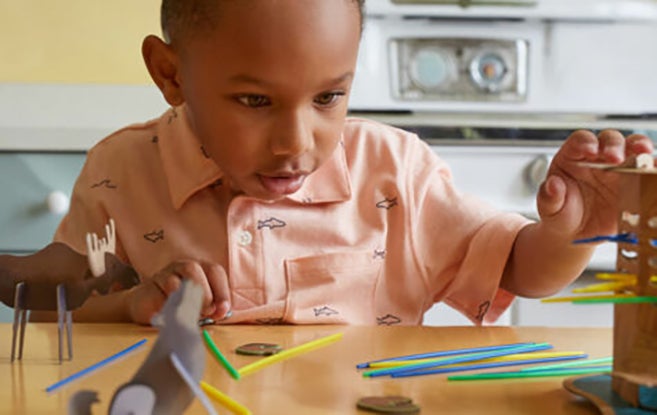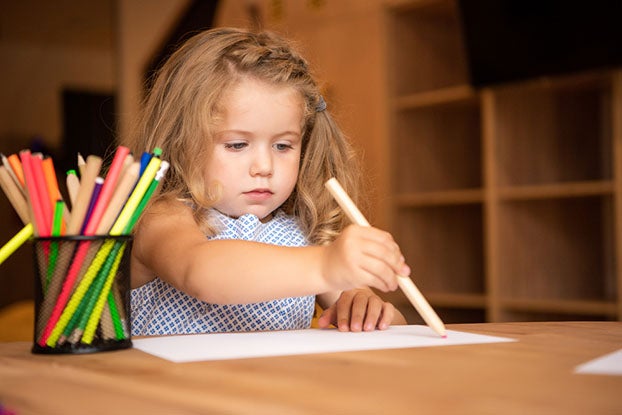Kids learn best through play. It’s how they discover the world around them and develop their cognitive, social, and physical skills. Sensory play is a type of play that encourages children to use all of their senses to interact with different materials and environments.
If that sounds like a lot, don’t worry! In this article, we’ll examine the concept of sensory play and explain why it’s so beneficial. We’ll also share some fun and easy activities you can do at home with your child.
Table Of Contents
What Is Sensory Play?

Sensory play is any activity that stimulates a child’s senses. Kids are ready for sensory play from birth on, and it can be adapted based on age. Many preschools and elementary schools incorporate sensory play, but it can also be done at home.
While you may have seen perfectly organized and themed sensory bins on Instagram, that’s not the only way to incorporate this type of play into your child’s routine.
It doesn’t have to be complicated or expensive. In fact, many sensory play activities can be done with items you have at home, like play dough, pebbles, sand, or rice to name a few. The key is to create a safe and open environment for your child to explore and engage with their senses.
This ignites their Curiosity, one of the 5 C’s at the heart of the Begin Approach to helping kids thrive in school and life. Curiosity, along with Critical Thinking, Core Skills, Creativity, and Character, are all essential for your child’s development and success.
Your Child’s Senses
The five primary senses kids can engage through sensory play are touch, sight, smell, taste, and hearing. Here are a few ideas for using each:
- Touch: Provide different textures for your child to explore, such as sand, water, or slime.
- Sight: Use colors and patterns to catch your child’s eye. Hang up mirrors or create a sensory bottle with glitter and colorful objects.
- Smell: Introduce your child to various scents, such as citrus, peppermint, and vanilla. Let them stop to smell the flowers when you’re outside and explore different herbs and spices.
- Taste: Encourage your child to join you in the kitchen as you cook or bake with a variety of ingredients. Ask them to be your taste tester and try to describe the flavors they experience.
- Hearing: Play music from around the world for your child to listen to. Let them create a musical instrument and use it to make lots of noise.
Additionally, this type of play addresses two other sensory systems that aren’t as well known: the proprioceptive and vestibular systems. That sounds a bit technical, but you see them at work in your kids all the time. Here’s a bit more information on them:
- Proprioceptive: This system relates to the body’s ability to sense where it is in space. Children can engage it by pushing, pulling, and climbing. You can also have them make shapes with their body and imitate different animals’ movements.
- Vestibular: This system governs balance and movement. Swinging, spinning, and rolling are great ways to engage the vestibular system. You can also set up obstacle courses or play games that require running and jumping.
Safety Rules For Sensory Play
Sensory play is a lot of fun but requires supervision. To keep your child safe, supervise them at all times and follow the same safety rules you would for other types of play (including watching what they put in their mouths).
You know your child and your home best, so take a moment before you start playing to check the play area for any trouble they might get into.
Benefits Of Sensory Play
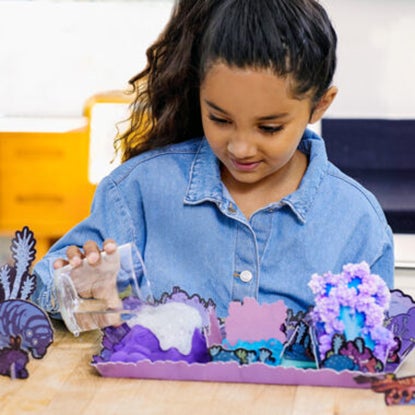
Your child may be having a blast during sensory play (big toddler giggles are common!), but they’re also learning and developing essential skills. Here are some benefits of this type of play.
Encourages Curiosity
There’s no “right way” to do sensory play because it’s all about exploring and discovering new things. This encourages your child’s innate curiosity, leading to a love of learning.
Improves Motor Skills
As your child manipulates different materials, their fine motor skills improve. Pouring, scooping, and sorting all require hand-eye coordination and control. Sensory play is an excellent way to strengthen these skills in a fun, engaging way.
Other types of sensory play can help kids develop their gross motor skills. For example, jumping in a pile of leaves or running through an obstacle course requires whole-body movement, balance, and coordination.
Inspires Social Interaction
Since it’s so fun, this type of play often inspires kids to play together, leading to social interaction and communication. Children can practice critical social skills such as sharing, cooperation, and turn-taking while engaging in group sensory activities.
Fosters Emotional Regulation
Some sensory materials, such as squishy playdough or smooth rice, can have a soothing effect on children. Engaging in sensory play can help them regulate their emotions and calm down when overwhelmed or overstimulated.
Develops Language And Vocabulary
While interacting with new materials, children often ask questions, describe their actions, and use descriptive language to discuss their experiences. It’s a fun way to expand their vocabulary and develop their language skills.
Simple Sensory Play Activities For Kids
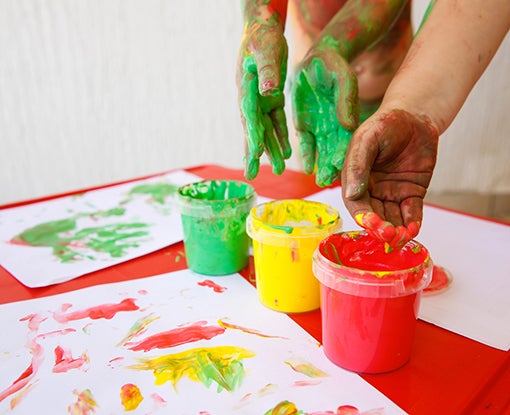
Now that you know more about sensory play and why it’s so important, here are some simple ways to incorporate it into your child’s playtime.
Obstacle Course
Set up an obstacle course in your backyard or living room using items like couch cushions, hula hoops, and colorful paper. Encourage your child to crawl, jump, and balance through the course while using their senses to help them navigate.
Tip: Have your child practice academic skills while navigating the course. For example, if they’re working on reading, you could include a few sight word cards they must read before moving on to the next station.
Sensory Bin
Fill a small bin with different materials such as rice, beans, or shaving cream. Then, add age-appropriate toys, measuring cups, and other items for your child to dig and explore with.
Tip: Try this ocean-themed sensory bin for some fun water play.
Outdoor Play
Nature inspires all five senses, so head outside to play. While you’re out there, ask your child to:
- Touch different textures like grass, bark, and leaves
- Listen for the birds chirping or the wind blowing
- Smell flowers or try to guess what food the neighbor is cooking for dinner based on its scent
- Find something to look at that catches their interest
- Pick something edible from your garden, if you have one
Tip: Have your child gather some natural materials to play with inside. Pinecones, leaves, and flowers make good additions to sensory bins or craft corners.
Dance Party
Crank up the tunes and have a dance party with your child. Encourage them to move their bodies in different ways, feel the beat of the music, and even explore different textures by using scarves or streamers while dancing.
Tip: Play a variety of genres to expose your child to different sounds and rhythms.
Sensory Bath
It doesn’t take much to turn an ordinary bath into a sensory experience for your child. Add in some bubbles, bath toys, and scented soap for a fun and relaxing time.
Your sensory baths can be as simple or elaborate as you want. Here are a few ideas to try:
- Use glow-in-the-dark stars or stickers for a fun, colorful bath in a dim room
- Add two or three drops of food coloring to tint the water
- Use sponges or loofahs for tactile stimulation
- Carefully cut a pool noodle into slices and add them to the water for interesting textures and colors
- Provide a funnel and measuring cups for pouring water
Craft Kits
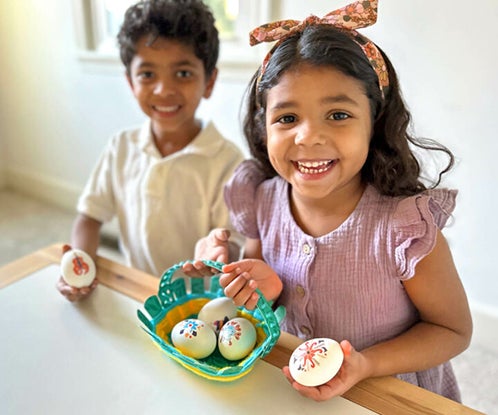
Kids five through eight years old can have a lot of sensory fun with Craft Discovery from Little Passports by Begin.
Each month, they’ll receive a new kit full of hands-on crafts and activities that explore different cultures and themes. These kits are great for sensory play, as they include lots of bright, interesting materials for your child to create with.
Tip: Encourage crafting between shipments by keeping a craft bin filled with materials like popsicle sticks, pom poms, and pipe cleaners for your child.
Science Experiments
Science experiments are another great way to engage your child’s senses while teaching them about the world. Try some of these simple science projects:
- Mix baking soda and vinegar for a fizzy chemical reaction
- Create a homemade lava lamp in a plastic bottle with oil, water, and food coloring
- Grow plants from seeds and observe the growth process
- Make invisible ink out of lemon juice and use heat to reveal secret messages
- Use vinegar to dissolve an eggshell
Tip: If your child is age eight or up, check out the Science Junior subscription from Little Passports by Begin.
Let Little Passports Deliver Sensory Play To Your Door
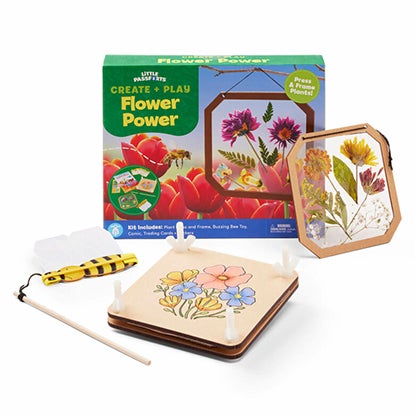
There are tons of great sensory play options, but at some point you may find you’ve run through your favorite ideas and are ready for something new. Little Passports offers a solution with subscription boxes that deliver hands-on learning experiences right to your doorstep.
From craft kits and science experiments to early learning activities and global journeys of discovery, Little Passports has something for everyone.
So why wait? Sign up for Little Passports today and open up a whole new world of sensory play for your child!
